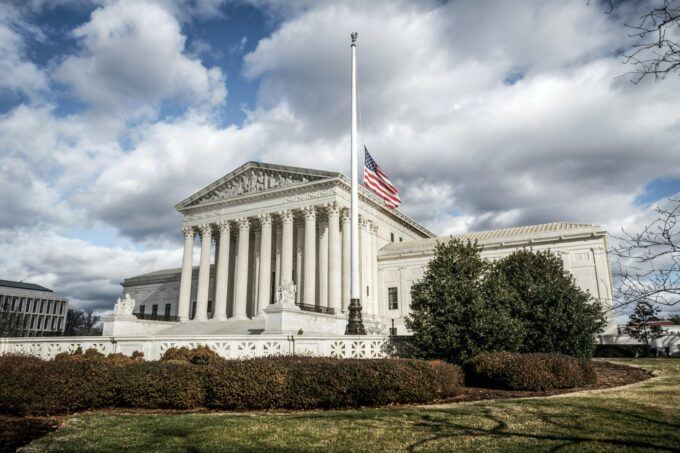
Image by Tim Mossholder.
The US Supreme Court continues to support Donald Trump and his administration’s policies, not by ruling in favor of the big issues at stake necessarily, but by not ruling on them. The most recent case, Trump v. CASA, Inc., stops lower courts from ruling directly that presidential orders are unconstitutional. The only way of stopping the Trump administration from executing these orders are via individual cases stemming from those directly affected or it may allow attorneys general to collectively stop these actions from being implemented.
All told, the CASA decision has been seen as a “huge victory” for Trump, and he proudly took a victory lap when he congratulated the Supreme Court at a press conference on Friday (27 June). But it’s not about what the court is ruling on; it continues to avoid resolving the big issues behind what the administration is doing.
First of all, the use of executive orders to basically rule the country by decree seems to go against what the constitution was about. As laid out in the Federalist Papers, for example, there would be some kind of checks and balances arrangement between the legislative, executive, and judicial branches of government such that no single branch would come to be dominant. The Trump administration, following the suggestions of Project 2025, seems intent on establishing what has come to be called Unitary Executive Theory (UET) that stipulates the supremacy of the executive branch over the other two branches of government.
At the Friday press conference, Attorney General Pam Bondi used the term “imperial judiciary” several times to criticize judges who ruled that Trump orders were unconstitutional but did not use that same royalistic description on Trump. Executive orders were not intended to be work-arounds on legislative actions, but are what they say they are: in executing the laws (passed by the legislative branch), the president says that various departments and agencies are to interpret the law in a particular way. It’s not about making law, but about how best to interpret it.
Those who subscribe to UET see executive orders more broadly as a means by which the president can make law. The Supreme Court could interpret and limit the scope of executive orders. So far, they have not, which is a concern that spans several presidencies as these orders get used with increasing frequency.
Second, Trump has repeatedly invoked the 1798 Alien Enemies Act (AEA) to detain and then deport people suspected of being in the US without documentation. The text of the AEA would seem to speak for itself in a judicial world where supposedly original intent of the constitution or statute has the final word. It says:
Be it enacted by the Senate and House of Representatives of the United States of America in Congress assembled, That whenever there shall be a declared war between the United States and any foreign nation or government, or any invasion or predatory incursion shall be perpetrated, attempted, or threatened against the territory of the United States, by any foreign nation or government, and the President of the United States shall make public proclamation of the event, all natives, citizens, denizens, or subjects of the hostile nation or government, being males of the age of fourteen years and upwards, who shall be within the United States, and not actually naturalized, shall be liable to be apprehended, restrained, secured and removed, as alien enemies.
Where is the declared war? The Supreme Court has not looked at this directly, allowing the administration to detain and deport people without due process. Moreover, “naturalized citizens” do not fall under the rubric of the AEA. It says so, directly.
Finally, in Trump v. CASA, Inc., the majority opinion stated that it was not ruling on what constitutes “birthright citizenship,” per what the 14th amendment sets out. Again, looking at the words of that amendment and its original intent, it seems pretty clear that Trump is misinterpreting what the 14th amendment actually says. As Justice Sotomayor states in her dissent, one of the criteria for letting lower federal judges to rule on the law is that the government has to show that it’s more likely than not to prevail on the broader, constitutional question.
If that is so, the US system of checks and balances between the three branches is in a lot of trouble. The Supreme Court, then, may be signaling that Trump is going to win on the birthright citizenship matter, thus overturning the longstanding precedent of US v. Wong Kim Ark (1898) where a person born in the US is a citizen regardless of where the parents were born.
As long as the current court continues to dance around the bigger issues at stake, the United States can slow-walk their way to authoritarian rule. It’s up to the court to reestablish some semblance of balance. Thus far, they seem much more focused on validating a unitary executive. Whatever civil rights protections are in place in this country would be placed in critical danger. Heck: we may be in critical danger already.
The post Supreme Court and Avoiding the Bigger Issues appeared first on CounterPunch.org.
This post was originally published on CounterPunch.org.